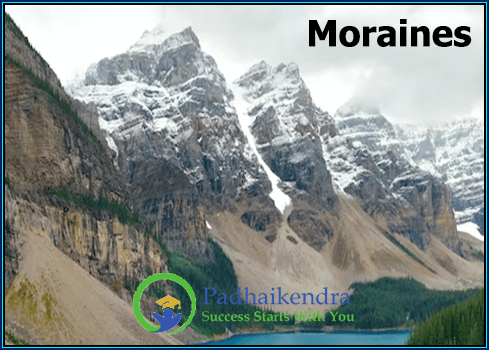Moraines are the ridges or piles of rocks, boulders, and sediment that are deposited by a glacier as it moves downhill. These landforms are created by the accumulation of glacial debris, which can be carried along by the glacier or deposited directly from the melting ice. Moraines can vary in size from small ridges of rocks and debris to massive deposits of sediment that stretch for miles.
There are several different types of moraines, each formed by a different process or location within the glacier. The main types of moraines are:
- Terminal Moraines: A terminal moraine is a long ridge of debris that is deposited at the farthest point reached by a glacier. As the glacier melts and retreats, it leaves behind a pile of sediment and rocks that mark the end of its journey.
- Lateral Moraines: Lateral moraines form along the sides of a glacier and are made up of debris that has fallen onto the glacier from the surrounding slopes. As the glacier moves downhill, it carries the lateral moraines with it and deposits them along the sides of its path.
- Medial Moraines: Medial moraines form where two glaciers merge together. The debris that is carried along by each glacier forms a long, narrow ridge down the center of the merged glacier.
- Ground Moraines: Ground moraines are formed when a glacier deposits sediment directly onto the ground beneath it. These moraines are often flat and spread out, covering a large area.
Moraines can have a significant impact on the landscape around them. They can create hills and ridges, and they can also act as natural dams, blocking the flow of water and creating lakes and ponds. In some cases, moraines can also be important sources of mineral deposits, as they can contain valuable minerals and metals that were carried along by the glacier.





